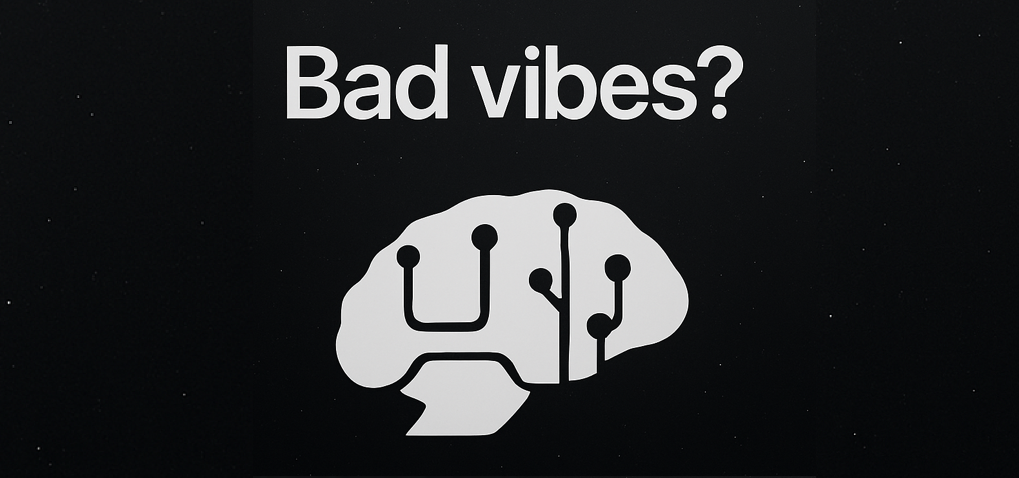The 2025 Vibe Coding Bubble

by Adam Elkassas, Founder pre.dev
Why your credits keep disappearing and you still don’t have a working app.
Vibe coding didn’t get you to the finish line, and you’re pissed. Now what?
The 2025 Vibe Coding Bubble
Why your credits keep disappearing and you still don’t have a working app.
If you’ve ever topped up credits, chatted with an AI “coder,” and still ended the night, pissed, with a half-working app and an empty wallet, this one’s for you.
Vibe coding is supposed to feel effortless: describe what you want, watch the app appear. But in 2025, a lot of people are discovering the same pattern: credits drain, complexity creeps in, and the finish line keeps moving. Underneath the vibes is a taxi meter called tokens — the way AI providers bill for the text they read and write. You pay per token, often with different rates for what you send in vs. what the model sends back; some platforms offer “prompt caching” to discount repeated boilerplate. That’s the fine print behind your credit burn. OpenAIMicrosoft Learn
The three pains vibe coders keep hitting
1) “Why are my credits gone?” Because the AI is metered like a ride-share: the longer the ride (bigger tasks, longer chats, bigger files), the higher the bill. Tokens are the currency all the big providers use, and they add up fast on multi-step tasks. NVIDIA Blog
2) “Unlimited wasn’t really unlimited.”* Several popular tools have moved away from “all you can eat” toward plans that include a chunk of usage and then meter heavy requests — because some tasks spend way more tokens than others. If you’ve noticed plan changes or “Auto” modes being reined in, that’s why. Cursor+1Simon Willison’s Weblog
3) “I still don’t have a working app.” Even when the AI writes code, getting to a stable prototype — or something deployable — often hits a wall. IDE-style agents are powerful but can feel technical: repos, dependencies, environment setup, and error chasing. Meanwhile, “super agents” that try to do everything can multiply token use per request by an order of magnitude, which is bad for budgets and patience. Business Insider
Why this feels like a bubble
When the dopamine of “ship it” meets the reality of per-token billing, expectations pop. Providers even charge more for extremely large jobs in some cases (think: very long requests), which is another reason “just try more” isn’t a strategy. Anthropic
What vibe coders actually need
You don’t need another tab full of logs. You need:
- Transparent costs up front. Plain-English estimates tied to your goals, not guesswork. (Remember: it’s all metered.) Stripe
- A clear plan. Decide what we’re building before you burn credits exploring.
- Fewer back-and-forths. Small, focused steps beat one giant, expensive ask.
- A prototype that runs. Something you can click, test, and show.
- A path to market. When it’s time to go beyond the prototype, you shouldn’t be stuck hunting for a team.

How pre.dev approaches this (in human terms)
We tuned pre.dev for vibe coders who want results, not rabbit holes:
- Clarity first. We scope your features in plain language and set expectations before the meter starts running.
- Token-smart builds. We break work into bite-size jobs and only ask big models to do small, specific tasks — so your credits go further. (Yes, every provider bills per token; that never changes.) OpenAI
- A prototype you can use. Because the requirements are crisp, you get a cleaner first version with fewer “try again” loops.
- From demo to delivery. When you’re ready, we match you with devs instantly so you can ship, not stall.
A five-minute checklist before you spend another dollar
- Write your “must-have” list in one paragraph. If it takes a page, you’ll pay for a page.
- Pick the smallest next milestone (e.g., “sign up + one core action”).
- Ask your tool for a credit estimate for that milestone, not the whole app. (If they can’t say, treat it as a red flag.) Stripe
- Favor short, specific requests over long, wandering chats.
- Make sure there’s a handoff plan — either clean export or direct dev match — before you commit more credits.
Bottom line
The future of vibe coding isn’t “more magic” — it’s more clarity. Plan first, spend smarter, prototype faster, and have a clean path to market. That’s how the bubble turns into a business.
Sources (plain-English)
- Token/credit billing and per-token rates (with separate input/output) + prompt caching basics. OpenAIMicrosoft Learn
- What “tokens” are (consumer-friendly explainer). NVIDIA Blog
- Plan changes and included-usage models from a popular AI code editor. Cursor+1Simon Willison’s Weblog
- Heavy requests can cost more under “long context” pricing tiers. Anthropic
- “Super agents” can multiply token usage per task (and costs), straining budgets. Business Insider

